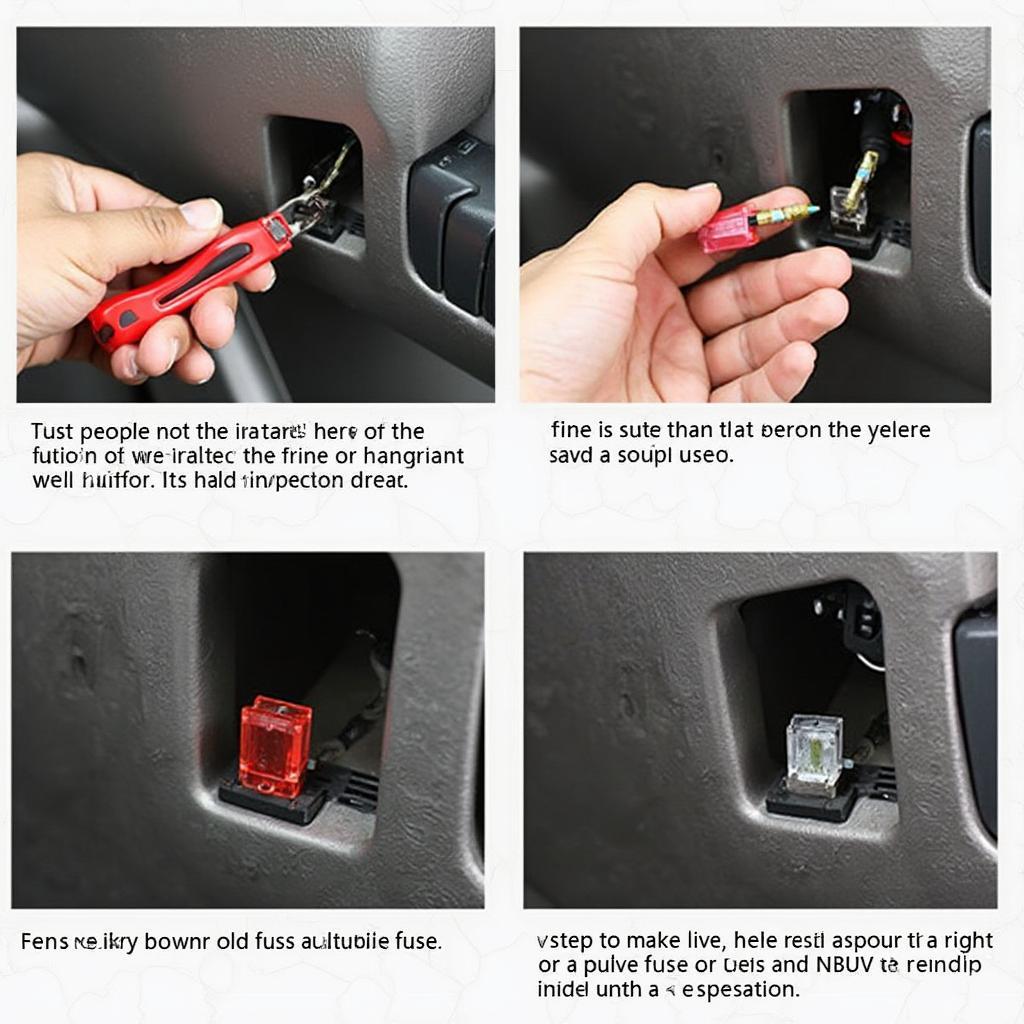The Silverado OBD2 fuse is a critical component of your truck’s diagnostic system. Understanding its location, function, and how to troubleshoot issues is essential for any Silverado owner. This article will provide a comprehensive guide to everything you need to know about the Silverado OBD2 fuse, from its location and replacement to common problems and their solutions. We’ll cover various Silverado model years and delve into the importance of this small but vital fuse.
The OBD2 port, powered by the OBD2 fuse, is your gateway to understanding your Silverado’s health. It allows you to connect a diagnostic scanner and retrieve valuable information about the vehicle’s performance and any potential issues. Knowing how to handle fuse-related problems can save you time and money.
If your OBD2 scanner isn’t connecting, the fuse might be the culprit. Here’s how to check and replace it, along with solutions to common issues. Are you experiencing issues with your OBD2 adapter not connecting to ecu?
Locating the OBD2 Fuse in Your Silverado
The OBD2 fuse location varies slightly depending on the model year of your Silverado. Generally, you can find it in one of two places: the underhood fuse box or the instrument panel fuse block.
-
Underhood Fuse Box: This is often located near the battery or on the fender well. Consult your owner’s manual for the precise location for your specific model year. The fuse box usually has a diagram showing the location of each fuse.
-
Instrument Panel Fuse Block: This fuse block is typically located under the dashboard, either on the driver’s side or near the center console. Again, refer to your owner’s manual for the exact location in your Silverado.
Identifying the OBD2 Fuse
Once you’ve located the correct fuse box, you need to identify the OBD2 fuse. It’s typically labeled “OBD2” or “DLC.” The amperage rating is usually around 10-15 amps. The fuse itself is small and often translucent, allowing you to visually inspect it for breaks in the filament.
Replacing a Blown OBD2 Fuse in Your Silverado
Replacing a blown fuse is a simple process:
- Turn off the ignition: Ensure the vehicle is completely off before working with any electrical components.
- Locate the OBD2 fuse: Use your owner’s manual to find the correct fuse box and the OBD2 fuse within it.
- Remove the fuse: Use a fuse puller (often found inside the fuse box cover) or a pair of needle-nose pliers to carefully remove the fuse.
- Inspect the fuse: Look closely at the metal filament inside the fuse. If it’s broken or melted, the fuse is blown.
- Install a new fuse: Insert a new fuse of the same amperage rating into the slot. Do not use a higher amperage fuse, as this could damage the electrical system.
 Replacing a Blown OBD2 Fuse in a Silverado
Replacing a Blown OBD2 Fuse in a Silverado
Do you have problems with your 2001 tahoe not connecting to ecu obd2?
Troubleshooting Common OBD2 Fuse Issues in Your Silverado
If your OBD2 scanner still doesn’t work after replacing the fuse, here are some common issues and troubleshooting steps:
Blown Fuse Keeps Blowing
If the new fuse blows immediately after installation, it indicates a short circuit in the OBD2 system. This requires professional diagnosis and repair.
OBD2 Port Not Working
If the fuse is good but the OBD2 port still isn’t working, there could be a problem with the port itself, the wiring, or the ECU. Check the wiring for damage or loose connections.
Scanner Not Communicating
Sometimes the issue isn’t the fuse or the port but the scanner itself. Try a different scanner to see if it communicates with the vehicle. If you’re having trouble with an obd2 bluetooth not connecting to ecu, ensure your device is paired correctly.
“Regularly checking your fuses can prevent unexpected issues down the road,” advises John Smith, a certified automotive technician with over 20 years of experience. “It’s a simple check that can save you a lot of headache.”
You can find helpful information about an obd2 bluetooth no conecta con la ecu or d900 obd2 scanner not connecting to ecu.
Conclusion
The Silverado OBD2 fuse is a crucial component for diagnosing your truck’s health. Understanding its location, replacement process, and common troubleshooting steps can empower you to address OBD2-related issues efficiently. Remember always to consult your owner’s manual for specific information relating to your Silverado model year and seek professional help for persistent problems. Addressing these issues promptly can prevent further damage and ensure your Silverado stays in top condition.
FAQ
- What is the typical amperage of a Silverado OBD2 fuse? Usually 10-15 amps.
- Where can I find a replacement OBD2 fuse? Auto parts stores, online retailers, or even some gas stations.
- Can I use a higher amperage fuse than recommended? No, this could damage the electrical system.
- What if my OBD2 port still doesn’t work after replacing the fuse? Check the wiring, the port itself, or try a different scanner.
- Is it safe to replace the OBD2 fuse myself? Yes, it’s a simple procedure.
- Where is the OBD2 fuse box located? Check your owner’s manual for the exact location.
- What does “DLC” stand for? Data Link Connector.
“A properly functioning OBD2 system is essential for maintaining your vehicle’s performance,” adds Maria Garcia, lead mechanic at a local Chevrolet dealership. “Don’t ignore any issues with your OBD2 system.”
We understand you might have other related questions or concerns. Perhaps you’re wondering about other diagnostic tools or specific issues you’re encountering with your Silverado’s electrical system. We encourage you to explore other relevant articles on our website to find the information you need.
For immediate assistance, please contact our 24/7 customer support team via WhatsApp: +1(641)206-8880, Email: [email protected] or visit our office located at 789 Elm Street, San Francisco, CA 94102, USA.

